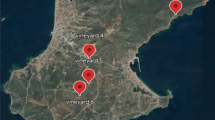Abstract
The grape harvest period and applied methods determine the levels of unripe berries (substandard berries, SSB) and material other than grape (MOG) in grape must. This study describes, in a full-factorial experiment at the industrial scale, the impact of different levels of MOG and SSB on the chemical composition and the sensorial properties of Sangiovese wines. The addition to the grape juice of 30 g/kg MOG led to significant changes in chemical composition, altering key components such as titratable acidity, lactic acid level, flavonoids concentration and color-related parameters. Sensorial parameters were also modified, as demonstrated by statistically significant differences both in astringency and in the concentration of volatile organic compounds. The threshold level for unripe (SSB) berries was arbitrarily defined as below 21.5 °Bx. In the experimental vineyard used here, 19–36% of grapes were unripe, depending on the harvest zone. The level of SSB influenced some important chemical and sensorial characteristics. Changes in SSB content altered ethanol concentration, titratable acidity, malic and lactic acid levels, a range of polyphenol-related parameters, certain volatile organic compound concentrations, as well as color and bitterness.




Similar content being viewed by others
References
Ribéreau-Gayon P, Dubourdieu D, Donèche B, Lonvaud A (2004) I, Edagricole, Bologna, Italy, Trattato di Enologia
Rolle L, Torchio F, Giacosa S, Segade SR, Cagnasso E, Gerbi V (2012) Assessment of physicochemical differences in Nebbiolo grape berries from different production areas and sorted by flotation. Am J Enol Vitic 63:195–204
Parenti A, Spugnoli P, Masella P, Guerrini L, Benedettelli S, Blasi D, S (2015) Comparison of grape harvesting and sorting methods on factors affecting the must quality. J Agri Eng 46:19–22
Fiorillo E, Crisci A, Filippis TDE, Gennaro SFDI., Blasi SDI, Matese A, Genesio L (2012) Airborne high-resolution images for grape classification: changes in correlation between technological and late maturity in a Sangiovese vineyard in Central Italy. Aust J Grape Wine Res 18:80–90
Kontoudakis N, Esteruelas M, Fort F, Canals JM, De Freitas V, Zamora F (2011) Influence of the heterogeneity of grape phenolic maturity on wine. Food Chem 3:767–774
Ward SC, Petrie PR, Johnson TE, Boss PK, Bastian SEP (2015) Unripe berries and petioles in vitis vinifera cv. cabernet sauvignon fermentations affect sensory and chemical profiles. Am J Enol Vitic 4:435–443
Falconer R, Liebich B, Hart A (2006) Automated color sorting of hand-harvested chardonnay. Am J Enol Vitic 57:491–496
Allan W (2004) Winegrape assessment in the vineyard and at the winery. Winetitles, Adelaide
Suriano S, Alba V, Di Gennaro D, Basile T, Tamborra M, Tarricone L (2016) Major phenolic and volatile compounds and their influence on sensorial aspects in stem-contact fermentation winemaking of Primitivo red wines. J Food Sci Technol 53:3329–3339
Pascual O, González-Royo E, Gil M, Gómez-Alonso S, García-Romero E, Canals JM, Zamora F (2016) Influence of grape seeds and stems on wine composition and astringency. J Agric Food Chem 64:6555–6566
Oiv (2009) Compendium of international methods of wine and must analysis. International Organisation of Vine and Wine, Paris, pp 154–196
Somers CT, Evans ME (1977) Spectral evaluation of young red wines: anthocyanin equilibria, total phenolics, free and molecular SO2 “chemical age”. J Sci Food Agric 28:279–287
Di Stefano R, Cravero MC, Gentilini N (1989) Metodi per lo studio dei polifenoli dei vini. L’Enotecnico XXV(5):83–89
Di Stefano R, Cravero MC (1989) I composti fenolici e la natura del colore dei vini rossi. L’Enotecnico XXV(10):81–87
Guerrini L, Masella P, Spugnoli P, Spinelli S, Calamai L, Parenti A (2016) A condenser to recover organic volatile compounds during vinification. Am J Enol Vitic: 67(2):163–168
Oiv (2015) Documento sull’analisi sensoriale del vino. International Organisation of Vine and Wine
Fregoni M (2005) Viticoltura di qualità. Phytoline, Italy
Pinero JC, Bates DM (2000) Mixed-effects models in S and S-PLUS. Springer, USA
Sun B, Spranger MI (2005) Changes in phenolic composition of Tinta Miúda red wines after 2 years of ageing in bottle: effect of winemaking technologies. Eur Food Res Technol 221:305–312
Hashizume K, Kida S, Samuta T (1998) Effect of steam treatment of grape cluster stems on the methoxypyrazine, phenolic, acid, and mineral content of red wines fermented with stems. J Agric Food Chem 46:4382–4386
Conde C, Silva P, Fontes N, Dias ACP, Tavares RM, Sousa MJ, Gerós H (2007) Biochemical changes throughout grape berry development and fruit and wine quality. Food (Glob Sci Books) 1:1–22
Spranger MI, Clímaco MC, Sun B, Eiriz N, Fortunato C, Nunes A, Belchior AP (2004) Differentiation of red winemaking technologies by phenolic and volatile composition. Anal Chim Acta 513:151–161
García E, Chacón JL, Martínez J, Izquierdo PM (2003) Changes in volatile compounds during ripening in grapes of Airén, Macabeo and Chardonnay white varieties grown in La Mancha region (Spain). Food Sci Technol Int 9:33–41
Oliveira JM, Faria M, Sá F, Barros F, Araújo IM (2006) C6-alcohols as varietal markers for assessment of wine origin. Anal Chim Acta 563:300–309
Vilanova M, Ugliano M, Varela C, Siebert T, Pretorius IS, Henschke PA (2007) Assimilable nitrogen utilisation and production of volatile and non-volatile compounds in chemically defined medium by Saccharomyces cerevisiae wine yeasts. Appl Microbiol Biotechnol 77:145–157
Picariello L, Gambuti A, Picariello B, Moio L (2017) Evolution of pigments, tannins and acetaldehyde during forced oxidation of red wine: effect of tannins addition. Food Sci Technol 77:370–375
Matese A, Di Gennaro SF (2015) Technology in precision viticulture: a state of the art review. Int J Wine Res 7:69–81
Acknowledgements
The authors would like to thank the Consorzio Tuscania s.r.l. for its financial support.
Author information
Authors and Affiliations
Corresponding author
Ethics declarations
Conflict of interest
The authors declare no conflict of interest.
Rights and permissions
About this article
Cite this article
Guerrini, L., Masella, P., Angeloni, G. et al. Harvest of Sangiovese grapes: the influence of material other than grape and unripe berries on wine quality. Eur Food Res Technol 244, 1487–1496 (2018). https://doi.org/10.1007/s00217-018-3063-y
Received:
Revised:
Accepted:
Published:
Issue Date:
DOI: https://doi.org/10.1007/s00217-018-3063-y




